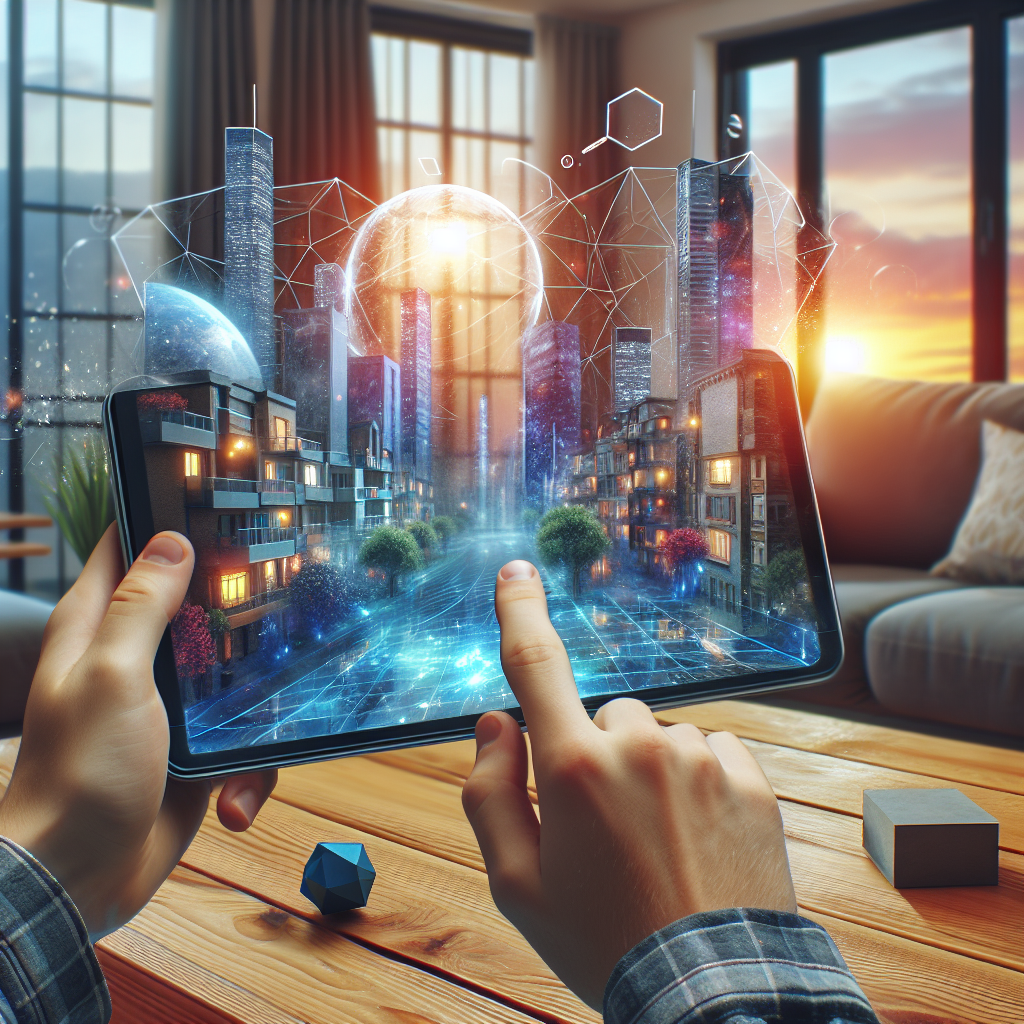-
Table of Contents
- Introduction
- The Current State of Augmented Reality in Indonesia
- 1. Adoption and Awareness
- 2. Industry Applications
- 3. Education and Training
- Challenges and Opportunities
- 1. Infrastructure and Connectivity
- 2. Content Creation and Localization
- 3. User Acceptance and Education
- The Future of Augmented Reality in Indonesia
- Summary
Introduction

Augmented Reality (AR) is a technology that has gained significant attention in recent years. It has the potential to revolutionize the way we interact with digital content and enhance our daily experiences. In Indonesia, AR is slowly gaining traction and is expected to play a significant role in shaping the future of user experiences. This article explores the current state of AR in Indonesia, its potential applications, and the challenges it faces.
The Current State of Augmented Reality in Indonesia
1. Adoption and Awareness
AR technology is still in its early stages of adoption in Indonesia. While there is a growing awareness of AR among tech-savvy individuals, the general public is yet to fully embrace this technology. However, with the increasing availability of smartphones and the rise of social media platforms, the potential for AR to reach a wider audience is growing.
2. Industry Applications
AR has the potential to transform various industries in Indonesia. One of the most prominent sectors where AR is making an impact is the retail industry. Companies are using AR to provide virtual try-on experiences for customers, allowing them to visualize products before making a purchase. This technology has the potential to increase customer engagement and boost sales.
Another industry that can benefit from AR is tourism. By overlaying digital information on real-world locations, AR can enhance the tourist experience by providing interactive guides, historical information, and virtual tours. This can help attract more tourists to Indonesia and provide them with a unique and immersive experience.
3. Education and Training
AR has the potential to revolutionize education and training in Indonesia. By integrating AR into classrooms, students can have a more interactive and engaging learning experience. AR can bring textbooks to life by overlaying 3D models, animations, and additional information on printed materials. This can help students better understand complex concepts and improve their retention of information.
In the field of training, AR can be used to simulate real-world scenarios and provide hands-on experience without the need for physical equipment. This can be particularly beneficial in industries such as healthcare, engineering, and aviation, where practical training is crucial.
Challenges and Opportunities
1. Infrastructure and Connectivity
One of the main challenges for the widespread adoption of AR in Indonesia is the availability of high-speed internet and reliable connectivity. AR applications require a significant amount of data transfer, and without a robust infrastructure, the user experience may be compromised. However, with the ongoing development of 5G technology and the government’s efforts to improve internet connectivity, this challenge is expected to be addressed in the near future.
2. Content Creation and Localization
Another challenge is the creation of localized AR content that caters to the Indonesian market. While there are global AR applications available, the lack of content specifically designed for Indonesian users limits the adoption of AR technology. Content creators and developers need to focus on creating culturally relevant and localized AR experiences to drive user engagement and adoption.
3. User Acceptance and Education
AR is still a relatively new technology for many Indonesians, and there is a need for greater awareness and education about its potential benefits. User acceptance can be influenced by factors such as cost, ease of use, and perceived value. Companies and organizations need to invest in educating the public about AR and its applications to drive user acceptance and adoption.
The Future of Augmented Reality in Indonesia
Despite the challenges, the future of AR in Indonesia looks promising. As technology continues to advance and become more accessible, the adoption of AR is expected to increase. The government’s focus on digital transformation and the development of smart cities also provides opportunities for AR to play a significant role in shaping the future of user experiences.
AR has the potential to transform various industries, enhance education and training, and provide unique experiences for users. With the right infrastructure, localized content, and user education, AR can become an integral part of everyday life in Indonesia.
Summary
Augmented Reality is slowly gaining traction in Indonesia, with the potential to revolutionize user experiences. The current state of AR in Indonesia shows a growing awareness and adoption, particularly in industries such as retail and tourism. However, challenges such as infrastructure, content creation, and user acceptance need to be addressed for widespread adoption. Despite these challenges, the future of AR in Indonesia looks promising, with opportunities for AR to transform industries, enhance education, and provide unique experiences. With the right investments and efforts, AR can shape the future of user experiences in Indonesia.
